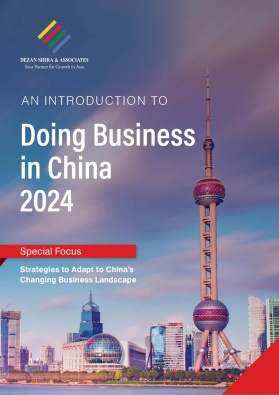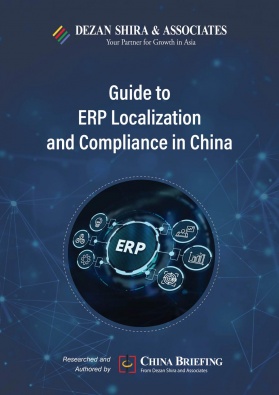China’s August 2024 Economy: Record Export Growth Amid Domestic Challenges
The National Bureau of Statistics (NBS) has released the trade and economic data for August 2024, highlighting a mixed performance for China’s economy. Notably, exports grew at their fastest pace in 17 months, reflecting resilience in key sectors and signaling positive momentum in foreign trade. However, other key economic indicators, such as industrial value-added and fixed asset investment, remain sluggish, underscoring the need for more effective stimulus measures in the coming months.
China’s National Bureau of Statistics (NBS) has released the trade and economic data for August 2024, highlighting a mixed performance for the world’s second-largest economy. Notably, exports grew at their fastest pace in 17 months, reflecting resilience in key sectors and signaling positive momentum in foreign trade.
However, some analysts are assessing the challenges ahead in meeting the “around 5 percent” GDP growth target. While certain economic indicators suggest a gradual recovery, industrial output has shown signs of moderation, and there are ongoing considerations regarding domestic investment and consumer demand.
Recently, President Xi Jinping encouraged government officials at all levels to work toward the annual growth target. While his comments emphasized the importance of this goal, they were framed with a more balanced tone compared to previous statements, reflecting an adaptive approach to the current economic landscape.
Analysts view these remarks as an opportunity to enhance policy support aimed at stimulating both investment and consumption, promoting a harmonious strategy to sustain economic momentum and achieve long-term stability.
Industrial growth slows amid rising challenges
In August, China’s industrial production operation grew by 4.5 percent year-on-year (YoY), down from 5.1 percent in July. This marks the weakest growth in five months. This downturn highlights mounting challenges faced by the Chinese economy.
The decline was driven by sluggish demand both domestically and internationally, further exacerbated by a fall in key industries such as oil refining and crude steel production. According to Reuters’ analysis, this deceleration in industrial activity shows the growing need for substantial policy support to stabilize growth and meet the government’s economic targets.
By sector, the industrial value-added (IVA) of manufacturing increased by 4.3 percent, the slowest expansion in 13 months. Nevertheless, the value-added of the equipment manufacturing sector and high-tech manufacturing increased by 6.4 percent and 8.6 percent, respectively, outpacing the overall IVA above the designated size by 1.9 and 4.1 percentage points, respectively.
Taking a closer look, 32 out of 41 major industries recorded year-on-year IVA growth. Notable sector performers included:
- Railway, ship, aerospace, and other transportation equipment manufacturing: +12%
- Computer, communication, and other electronic equipment manufacturing: +11.3 %
Moreover, automobile manufacturing saw a growth of 4.5 percent, with total automobile production reaching 2.511 million units.
In August, the product sales rate for industrial enterprises above designated size (those with an annual main business income of over RMB 20 million) was 96.6 percent, a decline of 0.8 percentage points year-on-year. The export delivery value of these enterprises was RMB 1.29 trillion (US$183.27 billion), reflecting a nominal year-on-year increase of 6.4 percent.
From January to August, the total value-added output of industrial enterprises above designated size increased by 5.8 percent year-on-year. Notably, private enterprises continued to outperform state-owned enterprises (SOEs), with value-added output increasing by 5.5 percent year-on-year, compared to a 4.3 percent increase for SOEs. Value-added output from foreign-invested enterprises (FIEs) grew by 4.1 percent year-on-year.
Services sector expands in August, but shows slower growth
Overall, the services production index rose by 4.6 percent year-on-year in August. Several service industries recorded the following growth rates in August:
- Information transmission, software, and IT services: +12.1 % percent
- Leasing and business services: +9.4%
- Transportation, warehousing, and postal services: +5.7%
- Wholesale and retail: +5.2%
Between January and August, the services production index increased by 4.9 percent year-on-year, with the revenue of service enterprises above a designated size growing 7.4 percent year-on-year.
In addition to the official data, the Caixin/S&P Global services purchasing managers’ index (PMI) dropped to 51.6, marking a slower growth pace than July’s 52.1. This shows a deceleration in growth. Despite the summer travel peak boosting the tourism industry, rising costs and increasing competition led some firms to reduce staff and offer discounts. Export business remained a bright spot, supporting further expansion, while businesses also reported heightened optimism, reflecting confidence in future growth potential.
Retail sales growth slows amid weaker demand
In August, China’s retail sales grew by 2.1 percent year-on-year, falling short of the 2.5 percent forecast by economists and slowing from July’s 2.7 percent increase.
Online sales of physical goods also saw modest growth, rising by just under one percent compared to the same period last year. This underperformance highlights continued challenges in consumer demand, despite various policy measures aimed at boosting domestic consumption. The data reflects a broader trend of slowing momentum in China’s post-pandemic recovery, with weaker-than-expected retail activity adding to concerns about the sustainability of economic growth.
In August, total retail sales of consumer goods reached RMB 3.87 trillion (US$548.81 billion), reflecting a 2.1 percent year-on-year increase. This marks a slight slowdown compared to the previous month, with growth decelerating by 0.01 percentage points from July.
From January to August, the total retail sales of consumer goods was RMB 3.12 trillion (US$442.45 billion) a year-on-year increase of 3.4 percent.
Among these:
- Urban retail sales: +1.8 %.
- Rural retail sales: +3.9 %
- Merchandise sales: +5 %
Yet, sales of key consumer categories exhibited solid growth, with communication equipment leading the way at 14.8 percent and household appliances and audiovisual equipment increasing by 3.4 percent. Grain, oil, and food saw a robust rise of 10.1 percent, while Chinese and Western medicines experienced growth of 4.3 percent, highlighting strong demand for both essential and upgraded goods.
Online retail sales continued their rapid expansion, reaching RMB 9.64 trillion (US$1.36 trillion) from January to August 2024, up 8.9 percent year-on-year. Of this, online retail sales of physical goods accounted for 25.6 percent of total retail sales, reaching RMB 8.01 trillion (US$1.13), a growth of 8.1 percent.
During the same period, retail sales of services grew by 6.9 percent, demonstrating the continued shift toward online and service-based consumption.
Despite modest demand, inflation in August remained subdued, with the national consumer price index (CPI) rising by 0.6 percent year-on-year, a slight increase of 0.1 percentage points compared to July.
Of this:
- Food, tobacco, and alcohol prices saw a 2.1 percent rise, with fresh vegetables and pork prices spiking by 21.8 percent and 16.1 percent year-on-year, respectively. Grain prices fell slightly by 0.1 percent, and fresh fruit prices increased by 4.1 percent.
- Non-food prices rose by 0.3 percent, with energy prices growing by 3.4 percent.
The core CPI, which excludes food and energy, rose by a modest 0.3 percent year-on-year, indicating relatively stable inflation despite the fluctuating prices in key categories.
Foreign trade continues to surge driven by strong exports
China’s foreign trade surged in August, with a total trade volume of RMB 3.75 trillion (US$532.92 billion), up 4.8 percent year-on-year. Of this, exports surged 8.4 percent year-on-year to RMB 2.20 trillion (US$296.3 billion), while imports reached RMB 1.55 trillion (US$220.27 billion), the same as the previous year.
Between January and August 2024, the total import and export of goods reached RMB 28.58 trillion (US$4.06 trillion), a 6 percent year-on-year increase. Among them, exports were RMB 16.45 trillion (US$2.33 trillion), and imports were RMB 12.12 trillion (US$1.72), a year-on-year increase of 4.7 percent.
Exports of mechanical and electrical products, in particular, increased by 8.8 percent, accounting for 59.1 percent of the total exports.
In dollar terms, China’s exports grew by 8.7 percent year-on-year in August, surpassing expectations and marking a strong performance amid broader economic challenges. This growth was driven by rising exports to key trading partners like the EU, the US, and ASEAN countries, with exports to the EU jumping by 13 percent. Notably, vehicle exports surged nearly 40 percent, while smartphones and ship vessels also saw significant increases.
Despite growing trade tensions and added tariffs, China’s export sector remains a key driver of economic activity, even as domestic demand struggles to gain momentum.
However, import growth in dollar terms still lagged, rising by only 0.5 percent, reflecting ongoing concerns about internal consumption and the need for policy support.
Fixed asset investment decelerates
In the first eight months of 2024, China’s fixed asset investment (FAI) reached RMB 32.9 trillion (US$4.67 trillion), marking a 3.4 percent year-on-year increase, 0.2 percentage points lower than July.
Excluding the property sector, still under adjustment, FAI grew 7.7 percent year-on-year between January and August.
Breaking down the investment by sector:
- Infrastructure investment grew by 4.4 percent year-on-year
- Manufacturing investment increased by 9.1 percent year-on-year
- Real estate development investment experienced a decline of 10.2 percent year-on-year
Notably, investment in high-tech industries saw significant growth, with a 10.2 percent year-on-year expansion, of which investment in high-tech manufacturing and high-tech services increased by 9.6 percent and 11.7 percent, respectively.
Foreign FAI continued to fall, reflecting the ongoing difficulties and uncertainties faced by FIEs in China. From January to August 2024, FAI by FIEs decreased by 17.7 percent year-on-year. In contrast, domestic enterprise investment rose by 3.3 percent year-on-year, while investment from enterprises based in Hong Kong, Macao, and Taiwan increased by 4.7 percent year-on-year.
Key takeaways from China’s August economic data
China’s economic data for August 2024 highlights both areas of resilience and ongoing challenges. While exports continue to perform well, other sectors such as industrial output and retail sales have slowed, raising concerns about the strength of domestic demand. The prolonged property slump and weaker-than-expected retail figures suggest that more robust policy support may be needed to sustain growth.
Looking ahead, the government faces growing pressure to introduce more aggressive measures to stabilize the economy and hit its growth target. President Xi’s recent call to meet annual development goals signals that further actions may be on the horizon, especially with key sectors facing persistent headwinds. As China works to balance short-term recovery efforts with long-term stability, the focus will likely shift toward revitalizing domestic demand and shoring up investor confidence.
About Us
China Briefing is one of five regional Asia Briefing publications, supported by Dezan Shira & Associates. For a complimentary subscription to China Briefing’s content products, please click here.
Dezan Shira & Associates assists foreign investors into China and has done so since 1992 through offices in Beijing, Tianjin, Dalian, Qingdao, Shanghai, Hangzhou, Ningbo, Suzhou, Guangzhou, Haikou, Zhongshan, Shenzhen, and Hong Kong. We also have offices in Vietnam, Indonesia, Singapore, United States, Germany, Italy, India, and Dubai (UAE) and partner firms assisting foreign investors in The Philippines, Malaysia, Thailand, Bangladesh, and Australia. For assistance in China, please contact the firm at china@dezshira.com or visit our website at www.dezshira.com.
- Previous Article Stay Alert: Guide to Preventing New Types of Fraud for Financial Staff
- Next Article Investire nelle industrie emergenti e high-tech della Cina. Opportunità per le aziende straniere


























